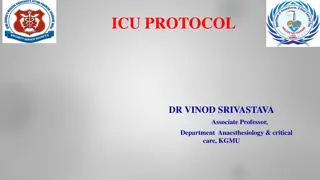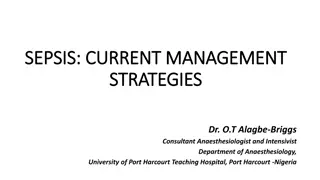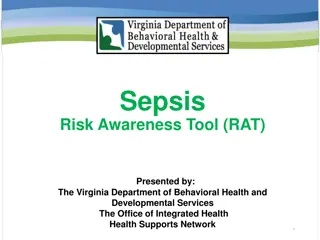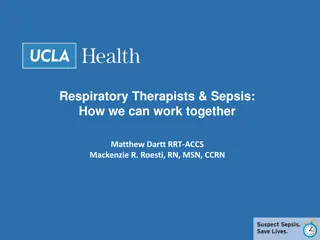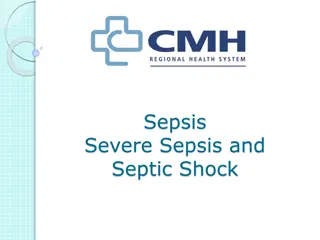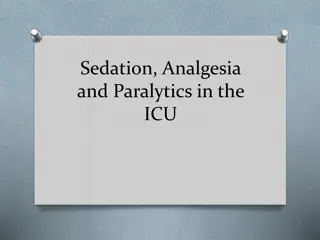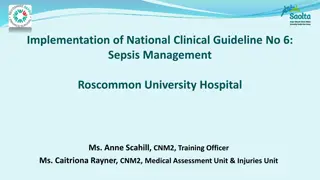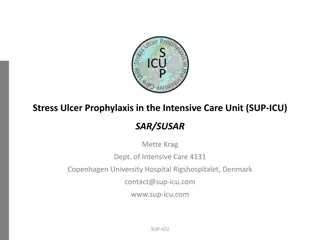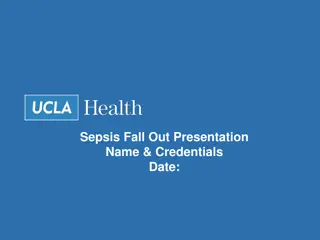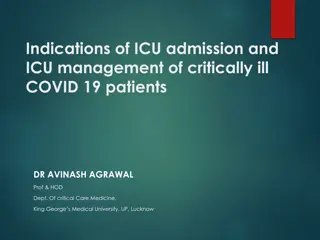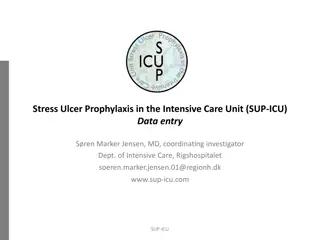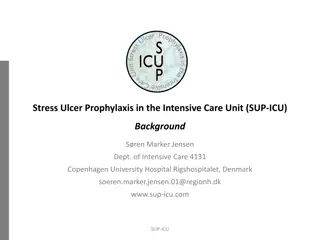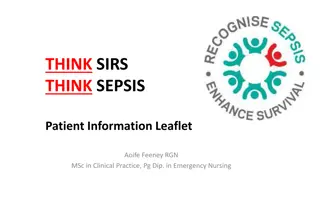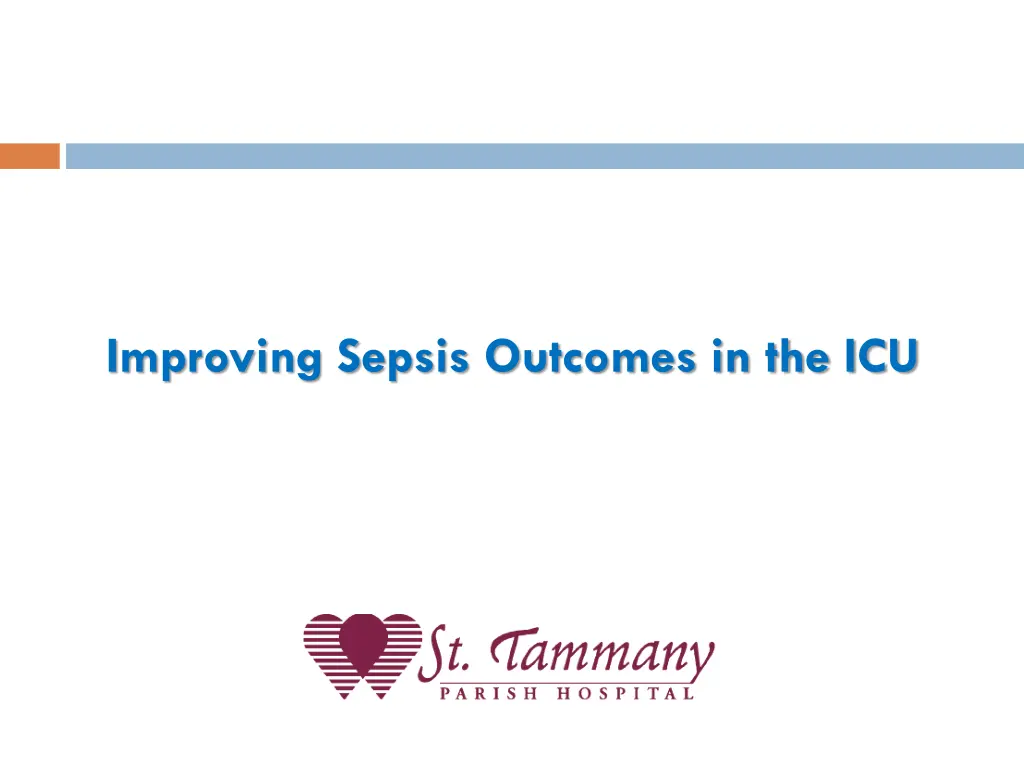
Effective Strategies for Enhancing Sepsis Outcomes in the ICU
Improve sepsis outcomes in the ICU by early identification, implementing efficient protocols, and enhancing patient care. Learn about the rationale for early detection, types of sepsis, laboratory statistics, inpatient sepsis rates, and key protocols like CPOE for sepsis and 3-hour bundle for severe sepsis.
Download Presentation

Please find below an Image/Link to download the presentation.
The content on the website is provided AS IS for your information and personal use only. It may not be sold, licensed, or shared on other websites without obtaining consent from the author. If you encounter any issues during the download, it is possible that the publisher has removed the file from their server.
You are allowed to download the files provided on this website for personal or commercial use, subject to the condition that they are used lawfully. All files are the property of their respective owners.
The content on the website is provided AS IS for your information and personal use only. It may not be sold, licensed, or shared on other websites without obtaining consent from the author.
E N D
Presentation Transcript
Rationale for Early Identification One of most dangerous/difficult conditions to treat Increased LOS, mortality rate, and cost **Mortality increases 7.6% for every hour of antimicrobial delay A third of hospital deaths are attributed to sepsis
STPH Present on Admission 10/01/12 9/30/13 500 449 450 400 350 300 250 200 150 100 42 50 0 POA Non-POA
Types of Sepsis Identified at STPH 10/01/12 9/30/13 300 269 250 200 143 150 100 79 50 0 Simple Sepsis Severe Sepsis Septic Shock
STPH Lab Statistics 10/01/12 9/30/13 80% 71% 70% 60% 50% 40% 30% 23% 20% 10% 4% 0% Blood Culture and Lactate within Two Days of Admit Blood Culture Only within Two Days of Admit Neither Blood Culture nor Lactate within Two days of Admit
STPH Inpatient Sepsis Rates Per 1000 Admissions 60% 51% 50% 47% 43% 40% 30% 30% 20% 10% 0% Cohort-25th Percentile Cohort-75th Percentile Cohort-All Hospitals St. Tammany Parish Hospital
Severe Sepsis - 3 Hour Bundle Measure lactic acid level Obtain blood cultures prior to administration of antibiotics Administer broad spectrum antibiotics Administer IV fluids for hypotension or lactic acid 4 mmol/L
Septic Shock - 6 Hour Bundle Apply vasopressors (for hypotension that does not respond to initial fluid resuscitation) to maintain a MAP 65 mm Hg In the event of persistent arterial hypotension despite volume resuscitation (septic shock) or initial lactic acid 4 mmol/L (36 mg/dl): * Measure CVP * Measure Scvo2 Re-measure lactic acid if initial level elevated Targets for quantitative resuscitation included in the guidelines are CVP of 8 mm Hg, Scvo2 of 70%, and normalization of lactic acid ***Some bundle elements may not be completed if the clinical conditions described in bundle do not prevail, but clinicians must assess for those conditions and make a determination.
Coding Sepsis- ICD9 995.91 Systemic inflammatory response syndrome due to infectious process without acute organ dysfunction Severe Sepsis ICD9 995.92 Sepsis with acute organ dysfunction Sepsis with multiple organ dysfunction (MOD) Systemic inflammatory response syndrome due to infectious process with acute organ dysfunction Septic Shock ICD9 785.52 Systemic inflammatory response syndrome with signs of end organ dysfunction Refractory hypotension
Recommended Measures Lactic Acid within 60 minutes of identification Blood Cultures x 2 within 60 minutes of identification Start time of antibiotic within 60 minutes of identification Fluid Resuscitation within 60 minutes of identification Time from identification to implementation of protocol

